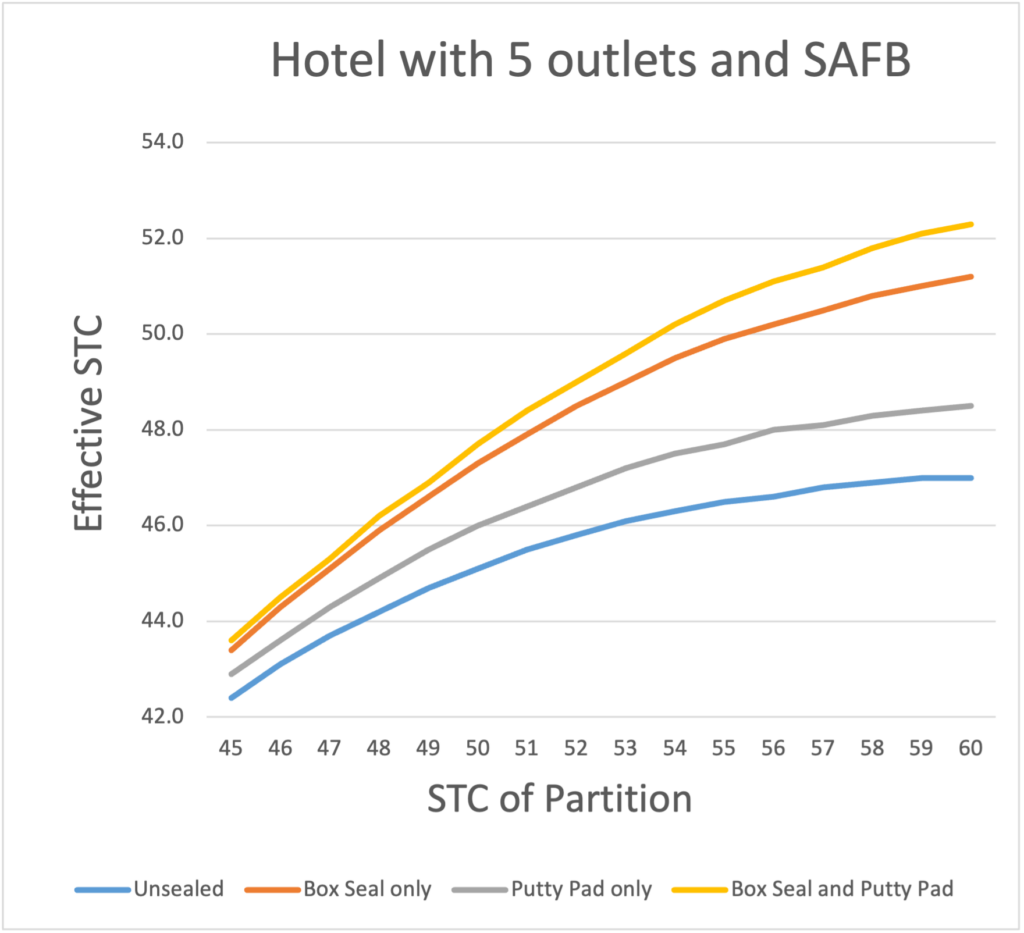- (716) 839-0900
- info@stcsoundcontrol.com
When noise becomes an issue, the instinctive response is often to build a thicker wall. After all, partitions create privacy and seem like they should stop sound. Sound travels readily through “flanking paths” (openings in the walls) like recessed outlet boxes. The STC Box Seal is a wall plate gasket that serves as an acoustic wall plate seal, effectively plugging these holes.
The Box Seal is available in multiple configurations, including all common NEMA configurations, and fits all major manufacturer’s wall plates (Note: Do not use the Box Seal with duplex wall plates by Cooper-Eaton).
Made of neoprene rubber, this wall plate gasket fills the gaps between the plate and the wall surface, and between the outlet box and the wall plate, reducing the amount of sound that travels between rooms.
Installing the Box Seal can improve STC outlet values by 7dB, allowing it attain STC-62 or higher.
Two key qualities make it possible: mass and resilience. The neoprene rubber is dense to block sound, but also resilient so it bounces back to dampen sound energy. Other gaskets and sticky putty pads are made of malleable clay which changes and holds shape due to applied pressure (and sound waves), and doesn’t block sound as effectively as neoprene.
Any types of buildings that need to prevent sound traveling between rooms can benefit from the Box Seal.

The Box Seal has many benefits over products like sealants and putty pads, including:
To put the Box Seal’s effects into context, you can imagine a typical hotel room, which usually shares a wall with an adjacent room and has five recessed outlets on each side. Most hotel chains’ standards require a minimum STC-50 partition. However, with untreated outlets, the effective performance drops to STC-42.
Using a higher STC wall won’t fix the problem, as sound will still pass through the openings created by the outlet.
But simply installing Box Seal increases the performance of the wall by seven decibels.